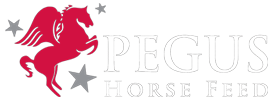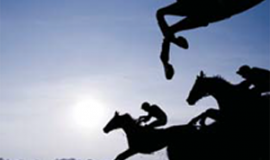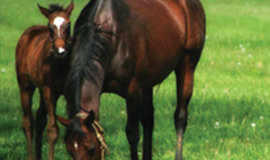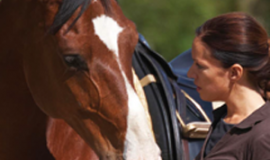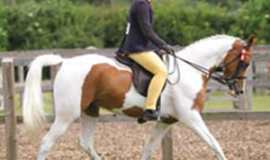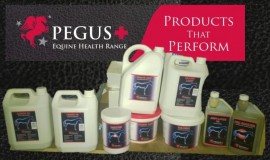An ABC of ration formulation
When you compose a daily ration for your horse, several factors have to be taken into account. What type, quality and amount of roughage should be included in the ration? Will the horse need additional compound feed or grains? What about mineral and vitamin supplements? Here are some basic points to help you formulate good rations for your horse.
Roughage type and quality
The first thing to consider should always be the type and amount of roughage. The type of roughage will usually be a grass hay or haylage. Normally, grass hay will have a dry matter content (DM) of around 85%. This means that grass hays will contain only about 15% water. Haylages can vary considerably in DM content, often from around 60% to 75%, which corresponds to a water content of 40% to 25%. When we compare the nutrient content of different hays and haylages, we should always compare the nutrient content per kg DM. Whether you choose to feed your horse hay or haylage does not matter so much. What does matter is that the feed is of good hygienic quality and that the nutrient content is suitable for the kind of horse you are feeding. For more details about forage quality for different types of horses see our article from October 2013
Optimal amounts of roughage
When considering the optimal amount of roughage to be included in a horse’s ration, you have to calculate the roughage amount as kilos of dry matter. This is especially important when you are feeding haylage. This is a moist feed and the water will not contribute to the nutrient supply, gut fill or satiety of the horse. The general rule is that on a mixed ration, a horse should receive roughage dry matter equivalent to 1,5% of its body weight (1,5 kg roughage DM per kg body weight) and never less than 1,0% of its body weight (1,0 kg roughage DM per kg body weight). This is to ensure enough eating and chewing time as well as normal levels of gut fill and satiety. Insufficient amounts of roughage DM may lead to impaired gut function and unwanted behavioral habits.
Is there a need for concentrates or vit/min supplements?
Once the quality and amount of roughage have been set, you must consider adding a compound feed, grains or a vitamin/mineral supplement. Pegus PC-Horse calculates the nutrient requirements of each horse individually, and will graphically show you if additional feeds are needed to balance the ration and thus meet the requirements of the individual horse.
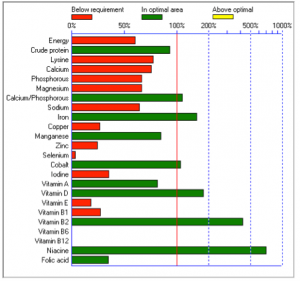
Example. Horse with moderate exercise. After feeding a fair amount of roughage, the nutrient requirements of the horse have not yet been met.
How much will a horse eat?
There are limits to how much a horse can eat. Most often, feed intake will be in the range of 2 – 3 kg dry matter (DM) per 100 kg body weight. Horses in training, lactating mares and young horses will normally eat more than idle horses, but individual variations may well be significant. Therefore, in overall terms, your aim is to compose a ration that gives the horse enough to eat to satisfy its requirements for eating and chewing time, gut fill and satiety. On the other hand, the total dry matter content of the ration must not be higher than what the horse is able to eat.
Composing rations with Pegus PC-Horse
When we use Pegus PC-Horse to compose rations for your horses, the program helps you in several ways.
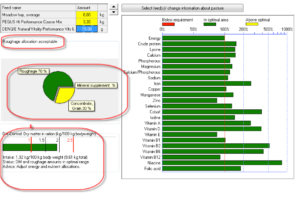
1. It shows you if the roughage dry matter content of the ration is acceptable.
2. It shows the percentage of roughage, concentrates and vit/min supplements in the total ration.
3. Via the DM-control, it shows whether the dry matter in the total ration is within an optimal range and comments on this.
4. It shows the levels of other key nutrients relevant to the horse’s requirements.
By using PC-Horse you can be confident that your rations are optimized for each individual horse.
This article was originally written by Dr. Day Austbø.
Copyright: PC-Horse International – Norway 2015
Pegus Horse Feed .
Free Phone Helpline
R.O.I.= 01800-378463
UK = 0800 011 4182
www.pegus.ie
